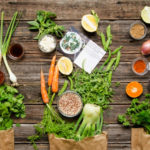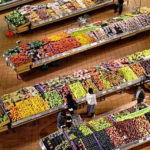
Monumental Shifts in the Grocery Supply Chain Will Blow Your Mind
Some years ago, I worked on the advertising for a ballot initiative in California. The Proposition was a good one, and it would help improve the health of all Californians, especially children. The initiative was started by a well-known actor. We produced several commercials in support of the Proposition, including one using the actor. When we tested the commercials they all did well, with the notable exception of the one featuring him. In fact, people were more likely to vote AGAINST the initiative after seeing his commercial!
Nobody wanted to tell the actor that his commercial was driving down support for the Proposition. After all, he was the driving force behind the whole effort.
Instead, we made a small local buy on the cable system around the actor’s house and ran his TV spot just on that system. The rest of the state got the other commercials. He saw his spot plenty of times and never realized that it didn’t run anywhere else in the state (keep reading to see how the Proposition did at the ballot box).
What, you may ask, has that got to do with the supply chain for the grocery store of the future? Well, it just goes to show that things may not be what they seem. And that is definitely true when describing where your groceries are going to be found, and what they look like, in the future.
 Meal Kits 2.0
Meal Kits 2.0
When meal kits first came out consumers had to subscribe to the service, which meant that there were some days when they got a delivery when they weren’t in the mood to prepare the meal. This led to severe attrition rates. Blue Apron reported that they have lost 24% of their customers in the past year, and Chef’d ceased operations altogether. In response, the meal kit companies have tied in with traditional supermarkets. This lowers their overhead and allows consumers to pick up meal kits when they feel like it, instead of being forced to sign up for a subscription. Blue Apron is available at Costco and just signed up with Walmart’s Jet.com, Albertsons acquired Plated, and Hello Fresh is partnering with Giant and Stop & Shop. Kroger’s new “Meal Kit Station” offers consumers multiple choices of frozen entree options and sides. They fill the containers with their selections and pay $7.99/ lb. The meals can all be prepped in a skillet within 12 minutes.
Is it a Drug Store or a Supermarket?
Another Kroger pilot program is a joint venture with Walgreens. Kroger private label products will be available in 13 Walgreens stores in Northern Kentucky as a test. Customers will also be able to order groceries online (supplied by Kroger) and pick them up at these Walgreen locations.
Meet the New Walmart
Walmart recently announced plans to convert parts of under-utilized parking lots into recreation areas, space for Farmers Markets, and entertainment and dining options.
Your Butcher Shop is Now a Machine
How do you feel about buying meat from a vending machine? A butcher shop in Stone Ridge, New York has installed two vending machines that sell fresh cut or frozen, individually packaged lamb, pork, and sausage. They plan to expand into surrounding areas and New York City early in 2019. A slightly less radical use of ‘vending machines’ is being tested by Walmart. Customers order and pay for groceries online. When their order is ready they receive an email, which includes a bar code they scan at a kiosk, and their order (kept fresh in refrigerated and frozen compartments) is delivered automatically within a minute. Customers don’t enter the store or interact with employees.
No Employees Here Either
Amazon is expanding its Amazon Go stores, planning to add as many as 3000 new locations in the next four years. Consumers are charged via their smartphone and just walk out of the store, there are no cashiers or checkstands.
Just Bring Me My Food
With restaurants and supermarkets both competing to win share of ‘take-out’ and ‘take-home’ meals, a new trend is making the distinction between the two obsolete. Start-ups (one funded by Uber co-founder Travis Kalanick) are centralizing kitchen space for multiple restaurants in one location, increasing efficiency and speed of concept development. Home delivery is key to this concept. One version being contemplated would only have home delivery, with no actual restaurant for customers to visit. Similarly, Walmart is testing ‘pick-up only’ facilities that bring online orders to customers waiting in drive up bays. They are not attached to a traditional store. And Kroger just signed up with Ocado to build twenty robotically operated distribution centers in the next three years to handle online deliveries. Meanwhile, Uber Eats is considering expanding its pick up and delivery of restaurant takeout to include grocery pick up and delivery.
Is Your Supply Chain Ready for the Future?
All of these changes are blurring the lines between restaurant and supermarket, foodservice, and packaged foods. Suppliers must be aware of both the opportunities and challenges these innovations offer. Even if the ‘supermarket’ of the future doesn’t look like one (since it doesn’t have a store front!), the supply chain must be ready to support it.
And if you have read this far just to see whether the Proposition passed, I am pleased to report it squeaked by 51% to 49%.





